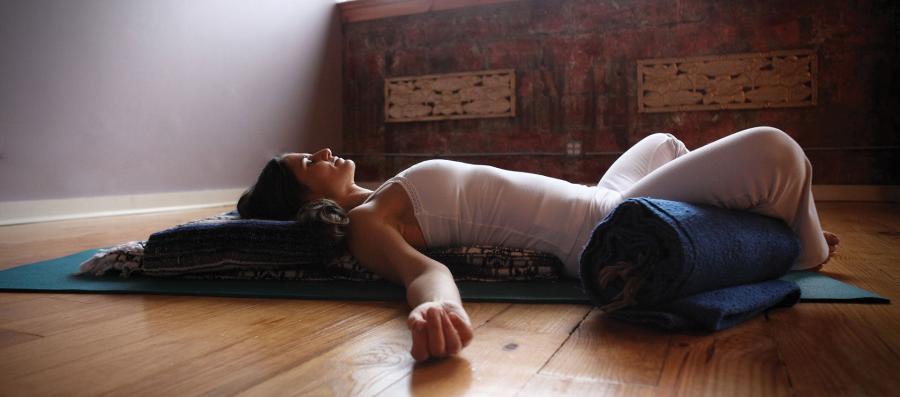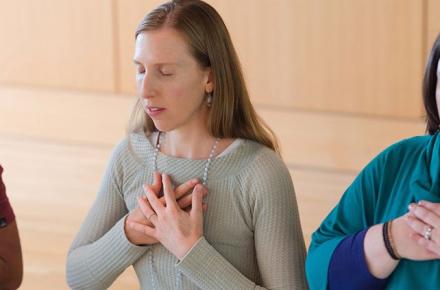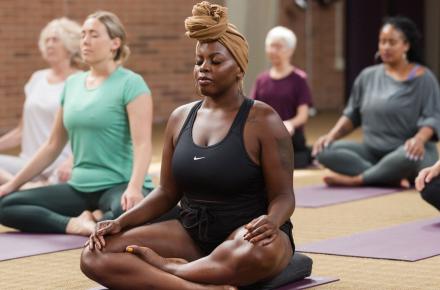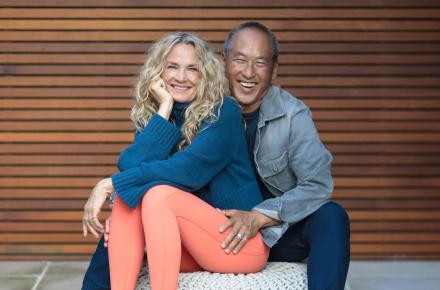Six Easy Ways to Add Restorative Yoga to Your Practice or Teaching


Back in 2000, when I started leading restorative yoga teacher trainings, restorative classes were often perceived as a “yoga nap.” People thought of the practice as yoga for the lazy, sick, or old.
Today, it is amazing to see this healing practice being offered everywhere, from yoga studios to athletic trainings, from hospitals to corporate environments, while popular magazines feature restorative practices. Restorative yoga is the new power yoga.
Those who practice restorative yoga report that they experience a wide range of benefits—including increased energy, decreased anxiety, relief of chronic pain, quicker recovery time, and a better overall ability to manage stress in their lives.
That doesn’t surprise me, as rest is a prerequisite for healing and well-being, and restorative yoga is the ultimate training ground for learning the skills needed to rest deeply and release habitual tension.
In restorative yoga, we learn how to allow ourselves to slow down, be supported, pay attention, grow present, and release into stillness. We learn how to practice “being” rather than our usual “doing.” And when we allow ourselves to land and truly relax, we create conditions for our minds to calm and our bodies to heal. We soothe our overstimulated sympathetic nervous system, and find relief from the stress of our busy lives.
Well-supported restorative poses offer the experience of being cradled and protected, while providing the opportunity for deep relaxation and rejuvenation. This is the key that allows our nervous system to down-regulate and the relaxation response to kick in—something that only happens when we truly feel safe.
Like meditation, restorative yoga is a powerful practice for self-study and insight, allowing us time to visit with ourselves for reflection, connection, and growth. As we learn to identify our stress patterns, we also learn how to return more easily to a state of calm in the everyday moments that challenge us.
Restorative yoga is adaptable, and most everyone—regardless of age and physical capabilities—can participate in and benefit from this practice. The profound effect that restorative yoga has on my students (and myself) fuels my passion and dedication to continue sharing it and to help teachers develop skills in offering the practice.
While a typical restorative yoga sequence may be comprised of three to five poses, spending five to 20 minutes in each pose, there are many ways to slip a restorative pose into your practice or teaching. Here are a few approaches:
Add a restorative pose before your active yoga practice. Beginning with rest can help release tension, allowing you to more safely stretch and strengthen your muscles. It can also help create awareness and skillfulness around balancing effort and surrender within an active practice—leading to more efficient use of energy and action.
Add a restorative pose at the end of your active practice. Allowing time for repose and simply being after doing not only creates the conditions for recovery and replenishment, but also helps us to receive the benefits of all the action. Plus it's an amazing preparation for going deeper into relaxation in Savasana.
Substitute a restorative pose for Savasana. Not everyone is comfortable lying on the ground; physical limitations and/or emotional triggers can make Savasana a less-than-relaxing experience. Using bolsters and props for support, rather than simply lying flat on the ground—which feels like a vulnerable position to some—can help students feel safe enough to truly rest at the end of a practice.
Integrate meditative relaxation with restorative yoga. Scanning the body, practicing progressive relaxation, or doing a guided relaxation during restorative yoga helps us to identify the ways we habitually hold, grip, and stay busy in our bodies and minds. As we practice resting our mind on the breath, and allowing the body to be supported, we can learn to be with the variety of sensations, emotions, and thoughts that rise and fall—an amazing complement to a meditation practice.
Use a restorative pose as your meditation posture. For people who aren’t comfortable in a traditional sitting position (such as Bound Angle or Diamond pose), a well-propped restorative pose might be the perfect way to relax into meditation.
Couple a restorative practice with an active pose. If you are working on backbends, after your warm-up and exploration into an active backbending practice, rest in a supported backbend. Rather than “doing” the backbend, simply allow yourself to be in this receptive, open posture.
As each of us learns to relax more deeply, we integrate the benefits and then pass them on—approaching everyone and everything in our life with greater compassion. Little by little, this spreads more peace on the planet.
Find out about Jillian Pransky's Restorative Yoga Therapeutic Teacher Training at Kripalu.
Try these restorative postures at home:
Jillian's 10-minute guided Goddess pose (practiced on the back)
A calming pose to practice before bed
Four gentle yoga poses to balance your hormones
Restorative Legs-Elevated pose to release the psaos
© Kripalu Center for Yoga & Health. All rights reserved. To request permission to reprint, please email editor@kripalu.org.

















































